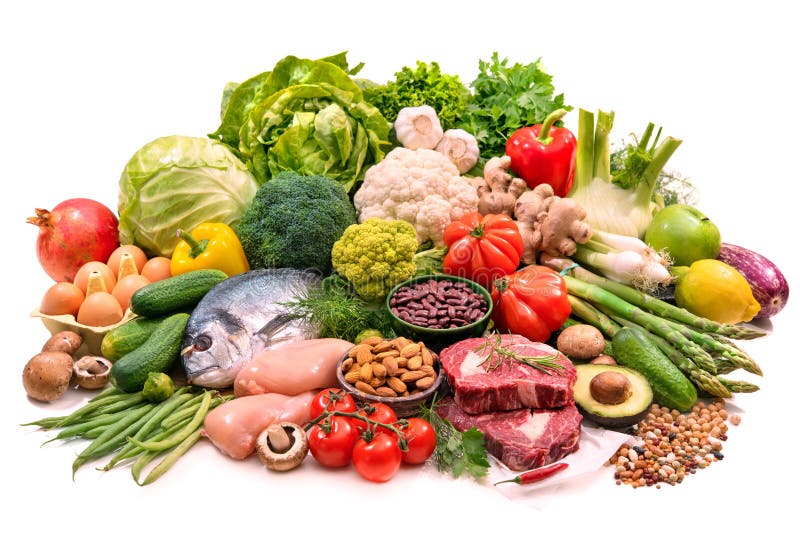Nutrition and Exercise: Weight Loss, Muscle Gain & Energy
I remember my first attempt at a marathon. I’d trained hard, putting in the miles, but on race day, I hit the wall around mile 20. My energy plummeted, and I struggled to finish. It wasn't a lack of physical preparation; it was a lack of understanding of how to fuel my body properly. That experience taught me a crucial lesson: physical activity is only half the battle. The other half, and arguably the more important half, is healthy eating.
The Synergistic Relationship Between Nutrition and Exercise
Exercise benefits are amplified when combined with proper healthy eating habits. Think of your body as a high-performance engine; it needs the right fuel to operate optimally. Without adequate nutrition, your workout routine will be less effective, your recovery will be slower, and your overall health will suffer. Conversely, a balanced diet without regular physical activity can lead to weight gain and increased risk of chronic diseases. The key is to find the perfect balance that works for your individual needs and goals.
Statistics show that individuals who combine regular exercise with a healthy diet experience a significantly lower risk of heart disease, type 2 diabetes, and certain types of cancer. According to a 2024 study published in the "Journal of Applied Physiology," individuals who followed a consistent workout routine and adhered to a diet plan rich in fruits, vegetables, and lean protein showed a 30% reduction in cardiovascular risk compared to those who only focused on one aspect.
Optimizing Nutrition for Different Exercise Goals
Nutritional needs vary depending on your exercise goals. Someone aiming for muscle building will have different requirements than someone focused on weight management or improving cardiovascular health. Here's a breakdown:
Fueling for Endurance (Cardio)
For endurance activities like running, cycling, or swimming, carbohydrates are your primary fuel source. Focus on complex carbohydrates like whole grains, fruits, and vegetables to provide sustained energy release. Consume simple carbohydrates like sports drinks or gels during long workouts to replenish glycogen stores.
- Pre-Workout: Oatmeal with berries and nuts, whole-wheat toast with avocado.
- During Workout (Longer than 90 minutes): Sports drink, energy gels, fruit.
- Post-Workout: Banana with peanut butter, whole-grain crackers with cheese.
Nourishing for Strength Training (Muscle Building)
Protein is crucial for muscle building and repair. Consume adequate amounts of lean protein sources like chicken, fish, beans, lentils, and tofu. Aim for around 0.8 grams of protein per pound of body weight. Creatine supplementation can also be beneficial for increasing muscle mass and strength.
- Pre-Workout: Greek yogurt with fruit, protein shake.
- Post-Workout: Protein shake with whey protein, chicken breast with brown rice and vegetables.
Eating for Weight Loss (Weight Management)
For weight management, focus on creating a calorie deficit by consuming fewer calories than you burn. Prioritize whole, unprocessed foods that are high in fiber and protein to promote satiety. Incorporate strength training to build muscle mass, which will increase your metabolism and help you burn more calories at rest. A balanced diet combined with regular physical activity is the most sustainable approach.
- Focus on: Lean protein, fruits, vegetables, whole grains, healthy fats.
- Limit: Processed foods, sugary drinks, excessive alcohol.
Creating a Personalized Nutrition and Exercise Plan
Developing a successful diet plan and workout routine requires personalization. Here's a step-by-step guide to help you create a plan that aligns with your goals and lifestyle:
- Define Your Goals: What do you want to achieve? Weight management, muscle building, improved cardiovascular health, or overall fitness? Be specific and realistic.
- Assess Your Current Fitness Level: Determine your baseline fitness level. Can you comfortably walk for 30 minutes? Can you lift basic weights? This will help you tailor your workout routine.
- Develop a Workout Routine:
Cardio and Strength Training
Incorporate both cardiovascular exercise and strength training into your routine. Aim for at least 150 minutes of moderate-intensity aerobic exercise or 75 minutes of vigorous-intensity aerobic exercise per week, along with two or more days of strength training that work all major muscle groups.
Progressive Overload
Gradually increase the intensity and duration of your workouts over time to continue challenging your body. This could involve lifting heavier weights, running longer distances, or performing more repetitions.
- Create a Nutrition Plan:
Calculating Your Caloric Needs
Determine your daily caloric needs based on your activity level and goals. Use an online calculator or consult with a registered dietitian to get an accurate estimate.
Design a diet plan that meets your caloric needs and provides adequate amounts of protein, carbohydrates, and fats. Prioritize whole, unprocessed foods and limit processed foods, sugary drinks, and unhealthy fats.
- Track Your Progress: Keep a food journal and workout log to monitor your progress. This will help you identify areas where you're succeeding and areas where you need to make adjustments.
- Stay Consistent: Consistency is key to achieving long-term results. Make your nutrition and exercise plan a sustainable part of your lifestyle.
Sample Meal Plan for Muscle Gain
This table provides a sample meal plan for someone aiming to build muscle. Remember to adjust portion sizes based on your individual needs and goals.
| Meal | Food | Approximate Calories | Protein (g) | Carbs (g) | Fats (g) |
|---|---|---|---|---|---|
| Breakfast | Oatmeal with protein powder, berries, and nuts | 450 | 30 | 50 | 15 |
| Mid-Morning Snack | Greek yogurt with granola and fruit | 250 | 20 | 30 | 5 |
| Lunch | Chicken breast with brown rice and steamed vegetables | 500 | 40 | 60 | 10 |
| Afternoon Snack | Protein shake with banana | 300 | 30 | 40 | 5 |
| Dinner | Salmon with quinoa and roasted vegetables | 600 | 40 | 50 | 25 |
| Evening Snack | Casein protein shake | 150 | 25 | 5 | 2 |
| Total | 2250 | 185 | 235 | 62 |
Pro Tips for Success
Stay Hydrated: Drink plenty of water throughout the day, especially before, during, and after exercise. Dehydration can impair performance and slow recovery.
Prioritize Sleep: Aim for 7-9 hours of quality sleep per night. Sleep is essential for muscle recovery and overall health.
Listen to Your Body: Pay attention to your body's signals and rest when needed. Overtraining can lead to injuries and burnout.
FAQ
Q: What should I eat before a workout?
A: Focus on easily digestible carbohydrates and a small amount of protein. Examples include a banana with peanut butter or oatmeal with berries.
Q: What should I eat after a workout?
A: Consume a combination of protein and carbohydrates to replenish glycogen stores and repair muscle tissue. Examples include a protein shake with fruit or chicken breast with brown rice.
Q: How much protein do I need?
A: The recommended daily protein intake for adults is 0.8 grams per kilogram of body weight. However, athletes and individuals aiming to build muscle may need more.
Q: Can I lose weight without exercise?
A: While it's possible to lose weight through diet alone, combining exercise with a healthy diet is the most effective approach for long-term weight management and overall health.
Q: What are some good sources of healthy fats?
A: Good sources of healthy fats include avocados, nuts, seeds, olive oil, and fatty fish like salmon.
Integrating proper nutrition with your exercise routine is a powerful strategy for achieving your health and fitness goals. It's a journey that requires understanding, personalization, and consistency. Don't be afraid to experiment and find what works best for you. Now, share your biggest nutrition or exercise challenge in the comments below, or tell us about a success you've had combining the two!

